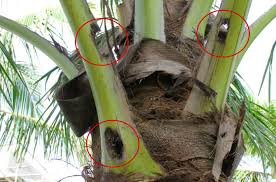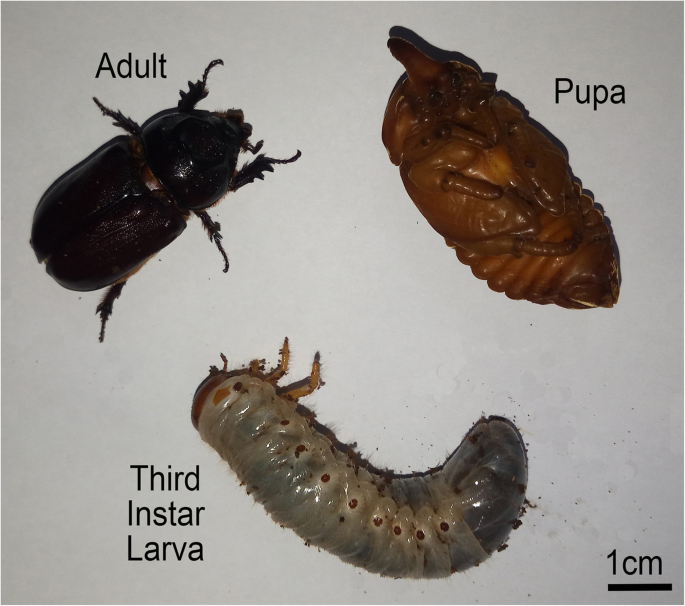
Current Status on Molokai
Coconut Rhinoceros Beetle (CRB) has not yet been detected on Molokai. The MoMISC crew actively sets and monitors CRB traps at the Molokai Airport with no captures to report. So far, CRB has only been detected on the island of Oahu where control efforts are underway.
Harm:
- Adult CRB bore into the crowns of coconut palms to eat developing leaves
- CRB damaged palm fronds have distinct geometric notching, appearing to have been cut by scissors

- The damage to palms and their fronds can outright kill the tree or leave it susceptible to disease
- Grubs can be spread through green waste transfer
- Adults can spread through flight, hitchhiking and in high wind events
- Threatens the endemic and endangered fan palms, Loulu
- CRB also pose threats to all oil palms, pandanus trees, and banana trees
Description:
- Adult coconut rhinoceros beetles can grow to be between 1 t0 2 inches in length and are solid black in color
- All CRB will have a horn on it’s head, though the male’s horn is more than twice as long as the female’s (see photo above)
- CRB eggs are laid and develop inside rotting coconut logs, mulch or compost piles
- Hatched grubs are C-shaped and grow to be between 2.3-4.1 inches long
- Grubs will feed on decaying wood and organic material for about 4-6 months before pupating

- After pupating for about two weeks, adults emerge (see photo below)
- Adult CRB are active at night and can for about 4-9 months





